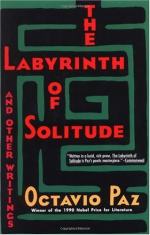|
This section contains 503 words (approx. 2 pages at 300 words per page) |

|
Why does the writer write? Paz once stated that this was the only valid question. He himself has been writing, as early as his classical Labyrinth of Solitude (1950) shows, in order to understand Mexico. In Vuelta he continues this commitment. A privileged moment is his return from the East (in 1969) that allows him—as happened before with Diego Rivera's return from Europe—to see the Mexican reality as if he hadn't seen it before.
Back in Mexico, Paz weeps not tears of love, as did Ulysses at the sight of his Ithaca, but of wrath, as did Moses descending from the Horeb…. Anger is all-powerful in the valley and contaminates the poet. Seeing Mexico's errors—those common to Latin America—allows him, forces him, to meditate on himself and the meaning of his vital adventure…. The autobiographical is another important thematic line of Vuelta, continuing the effort emphasized...
|
This section contains 503 words (approx. 2 pages at 300 words per page) |

|


